
last updated: September 21, 2004
10:20 PM EST
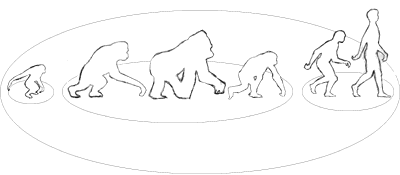
1b. Genetic Distance Grouping, walking primates
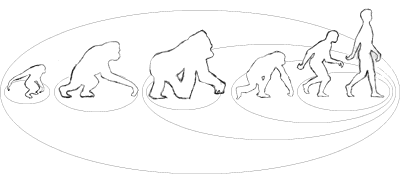
1c. Family Tree, walking primates
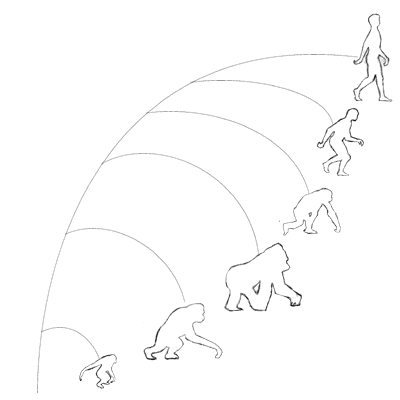
2a. Traditional Grouping, alternate primates
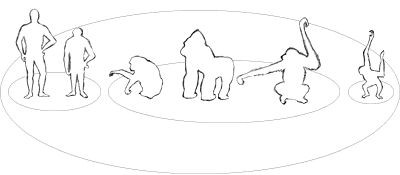
2b. Genetic Distance Grouping, alternate primates
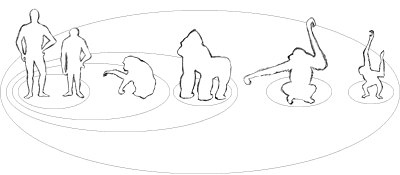
2c. Family Tree, alternate primates
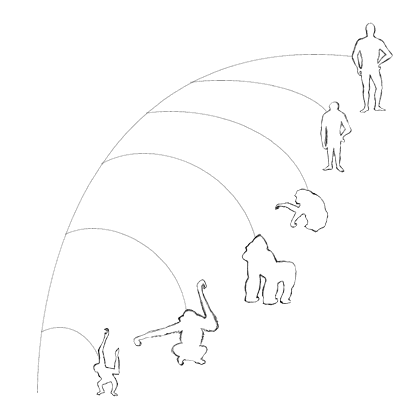
Closeup of the gibbons
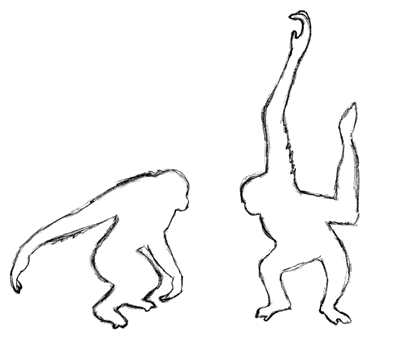
Closeup of the orangutans
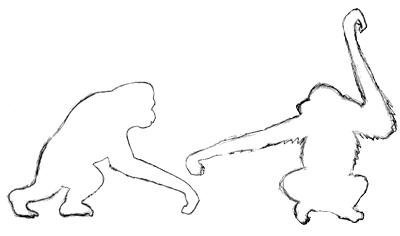
Closeup of the gorillas
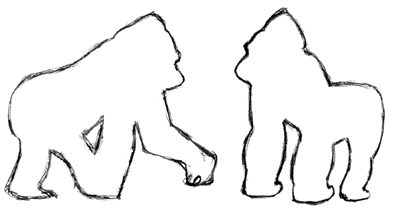
Closeup of the chimpanzees
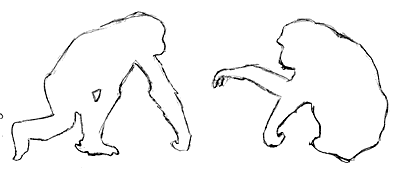
Closeup of the extinct humans
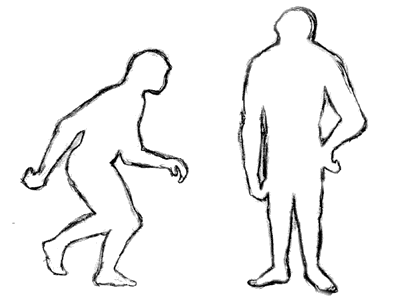
Closeup of the modern humans
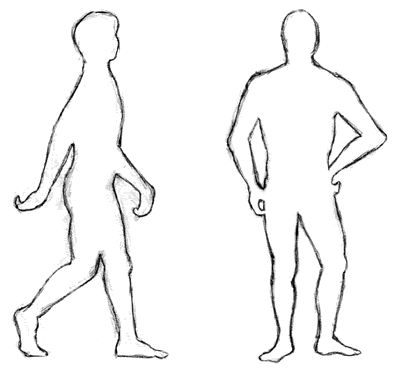
Hey there, Kris! Here are my sketches for the primate evolution article. I've basically sketched out two variations on each animal: a walking stance, similar to the illustration you provided, and an alternate stance (usually either standing or sitting). So the sketches of the various groupings and family trees are separated into group 1 (walking) and group 2 (alternate). I decided to go with a curved variation of the family tree (the layout also looks a bit like a leaf, which I liked). However, we can easily go with another arrangement depending on the type of space is available for that illustration (horizontal, vertical, etc).
At the very bottom (lots of scrolling required), I've included closer views of the sketches, so that you can get a feel for the detail. They're not to scale with each other in the closeups, but instead scaled to fit the viewing area.
For the extinct human, I wasn't sure which type of extinct human to model him after (homo erectus, or perhaps earlier ones like australopithicus). So the walking version is stooped over, while the standing one is standing more erect. If you could let me know which is better and/or more accurate, that would be great!
Let me know what you think!
Back to Main
On to Sketches, Round 2
On to Sketches, Round 3
On to Color Comps
On to Color Comps, Heatmap and Family Tree
On to Color Comps Round 2, Family Tree
On to Final, Heatmap